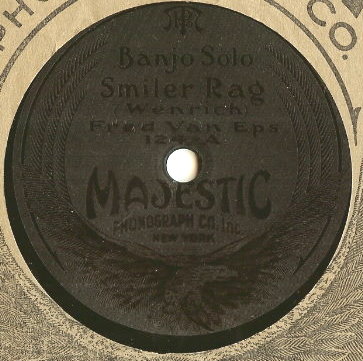

Within the court documents for Majestic Record Corporation vs. Majestic Phonograph Co., Inc. was the deposition of Henry Hotaling, electro-plater, for Majestic Phonograph. In it he describes the making of a record. Henry started with the company in May, 1916. I thought it interesting to point this out. He states:
“The process of manufacturing a record such as that sold by the defendant [Majestic Phonograph] company is as follows: The record is recorded on wax and a surface of the wax is metallized and then placed into the electro-plating bath and copper-plated, that being the first process. That plating, of course, means the master plating; then from the master plating we take what we call the mother. This process brings you to a period similar to what is known in the science of photography as a positive and a negative. The mother is engraved with the title and whatever name is to be put upon the record. From the mother is made the stamper, from which the records are produced. The mother and master above referred to are what are commonly known as matrices, and in order to change the title to a record or the name which is to go on a record, it is necessary that new matrices be made, which is a very expensive operation costing about six or seven dollars for each selection. At the time the contract between plaintiff and defendant was entered into, the defendant had all its matrices made up.”
This statement was made in response to the fact that the records were supposed to say “Majestic Record” on them rather than “Majestic Phonograph Co., Inc.” according to the contract. Majestic Record Corporation made a point of this in their request for an injunction. However, many of the matrices and records were already produced prior to the contract with manufacturer’s name on it, per Henry Hotaling's statements.
Information and images compiled by: Glenn Longwell
Contact: info@majesticrecord.com